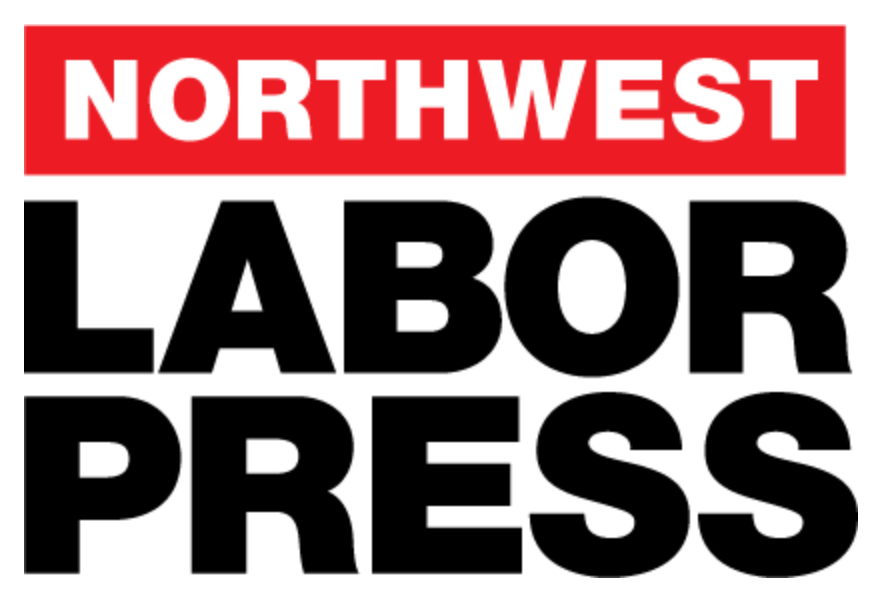By Don McIntosh
“The women of UFCW Local 555 are not amused,” Oregon’s largest private sector union says in a campaign for pay equity launched last month.
Neither are the men, actually.
 Last year, as a customary part of union contract bargaining, United Food and Commercial Workers (UFCW) Local 555 asked Fred Meyer for a list of employees that would include job classifications, wages, and seniority. The union merged that with its own data that included members’ gender, and then spent months analyzing the data. Union officers had a hunch that men were out-earning women. But they were surprised to find out how much: Among journeyman grocery workers at Fred Meyer, male workers are earning on average $1.31 an hour more, Local 555 found.
Last year, as a customary part of union contract bargaining, United Food and Commercial Workers (UFCW) Local 555 asked Fred Meyer for a list of employees that would include job classifications, wages, and seniority. The union merged that with its own data that included members’ gender, and then spent months analyzing the data. Union officers had a hunch that men were out-earning women. But they were surprised to find out how much: Among journeyman grocery workers at Fred Meyer, male workers are earning on average $1.31 an hour more, Local 555 found.
It’s long been true that some higher-paid classifications like meat-cutters attract mostly male applicants. So Local 555 focused only on data for grocery jobs, where it turns out men and women are hired in almost exactly equal numbers.
Why are male journey-level grocery workers out-earning female counterparts? It comes down mainly to one thing: which pay schedule employees get assigned to by management.
Local 555’s contracts contain two pay schedules. Schedule A is for grocery checkers, courtesy clerks, and workers in produce, wine, regular grocery, freight, and the cold wall (dairy and prepackaged deli meats). Schedule B includes the deli and bakery departments, and cheese and coffee kiosks. The thing is: Workers don’t choose which of those two schedules they’re placed in. They fill out a job application for a general grocery category, and then get hired and assigned by managers to jobs in one of the two pay schedules. That’s the biggest source of the gender disparity — because the average wage is $17.22 for Schedule A and $13.69 for Schedule B. That’s a $3.53 difference.
Guess which schedule most female grocery applicants are assigned to? At Fred Meyer, Local 555 number crunchers found that women were twice as likely as men to be hired into the lower-paying Schedule B jobs. In fact, the two schedules are mirror images of each other: Two-thirds of Schedule B workers are women, while two-thirds of Schedule A workers are men.
Local 555 found that age appeared to be a factor as well — the gender wage gap expands dramatically for older women. Among journey-level grocery workers, the average woman over 60 makes $2.25 an hour less than the average man over 60, Local 555 found.
Men are also more likely to be given opportunities for promotion. Local 555 found that men under 30 were twice as likely to be made foreman as women under 30.
There’s even anecdotal reason to think that newly hired men may be given more hours and therefore progress more rapidly to journeyman pay, and that male employees end up getting paid above the contract minimum more often than women. UFCW hasn’t crunched the data to make those arguments yet; it wanted to start with just the most clearcut case — grocery journeyworkers. The information requested from Fred Meyer included data for about 10,000 employees in all departments in Oregon and Southwest Washington; Portland metro area grocery journeypersons make up about a quarter of that total.
These gendered pay disparities can add up over time: That $1.31-an-hour difference would total $122,000 over a 45-year career, Local 555 estimated.
In its campaign around gender pay equity, Local 555 isn’t actually accusing grocery managers of overt gender discrimination. It’s quite possible that the disparate pay results are simply the result of many unconscious choices.
But it is asking Fred Meyer and other grocery employers to do something about it.
Local 555 is proposing in contract bargaining that employers raise wages in Schedule B to make progress toward parity with Schedule A, arguing that the two schedules draw from the same set of applicants, and the difference between the work done in the two sets of jobs is minimal.
“Time’s up, Fred Meyer: fix the gap,” is the campaign’s slogan.
The starkly different A and B pay schedules have been in Local 555 contracts going back as far as anyone can remember, and it’s not clear why they originated.
The contracts are part of a set of multi-employer pattern agreements that includes other grocery employers like Safeway. Local 555 hasn’t analyzed similar data for other companies, but union leaders think they would find similar patterns if they did.
The Local 555 bargaining team is proposing wage increases for all members in its multi-employer contract negotiation, but if employers agree to raise wages even more for Schedule B, that would disproportionately lift up female employees who’ve been placed in jobs where they’re earning $1.33-an-hour less on average. Employers have given no indication that they’re interested in working to eliminate that gap.




I am a female, I earn less per hour than associates that started after me. I have a master degree and years of experience working in customer service, banking, schools and recreation sites. I have worked there for 2 1/2 years, others st higher pay only 6 months!? Explain that, please.